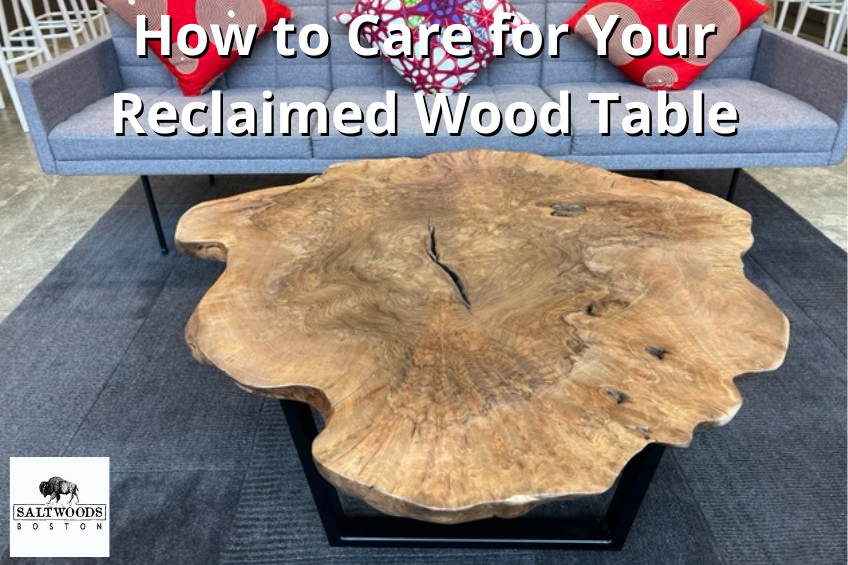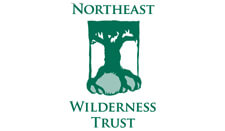How to Care for Your Reclaimed Wood Table
If you own a reclaimed wood table, you know how important it is to invest in proper care and cleaning.
You chose a reclaimed wood table as a solid, sturdy, virtually indestructible option for your dining room table. It’s vital to take proper care of this piece of furniture to ensure it lasts for a lifetime. The right tools and cleaners can extend the life of your reclaimed wood furniture and furniture leg styles. With the right maintenance, it can one day become a family heirloom.
We listed some helpful tips below to help protect your reclaimed wood table for generations.
Stained vs. Untreated Reclaimed Wood Tables
When you invest in real wood furniture, make sure to include an appropriate finish. A treated table will help protect the reclaimed wood against possible spills and stains. Different options for treating your table include varnish, polyurethane, and oil.
Since colonial times, shellac varnish has protected many custom living room tables. It’s a durable choice that allows great clarity to view the table’s wood grain and furniture leg styles. However, shellac does not hold up well to spills. It would fare better as a finish for a library table or a trestle table in an office. If you opt for a shellac finish, wipe any watermarks immediately and use coasters to preserve the surface.
Types of Reclaimed Wood Table Finishes
Oil-based polyurethane is a durable, super-tough finish for wood. It typically appears on basketball courts to help prevent dents and scratches while being water-resistant. The downside to a polyurethane coating is that you release toxic aromas into the air while curing indoors. In addition, with time, the coating may become cloudy and may turn yellow with increased age.
Danish oil or 100% pure tung oil creates a natural effect on a reclaimed wood surface. Danish oil is our top recommendation for custom living room tables and furniture leg styles. Oils require application with a soft cloth. For the oil to create a water-resistant surface, use about six coats. Be warned. If you try to finish your table this way, your over-brushed areas will show very easily. However, these flaws only add more character to the reclaimed wood surface.
Invest in a Proper Wood Cleaner
We recommend using olive oil and white vinegar mixed with water to clean your reclaimed wood furniture. The reason being is this cleaning solution is all-natural and non-toxic. The white vinegar and oil combination works best on reclaimed wood tables that lack varnish. If, for example, your trestle table has a seal or treatment, use a gentle soap and soft rag instead. You can read our blog about the best types of wood varnish for more options.
Make Sure Your Reclaimed Wood Table Is Clean Before Applying Wood Cleaner
Reclaimed wood tables and live edge tables are a way to bring nature’s beauty into your living room. Their unique composition of cracks, knots, and flaws come with being an old piece of wood. A soft paintbrush is an ideal tool to clean the nooks and crannies on your custom living room table. If your table has stubborn food buildup, use an aerosol spray can for computer cleaning. The airbursts are helpful in the removal of the most stubborn crumbs.
Remove Food Crumbs and Liquid Spills from Around Your Table
Ideally, you should remove the crumbles and any liquid spills from your reclaimed wood furniture as soon as you can. Food crumbs can contain oils that stain the table. Meanwhile, liquid spills can create a residue stain on your table. Invest in a small, soft-bristled paintbrush to keep your table clear of any crumbs in its knots and cracks.
Use Coasters On Your Reclaimed Wood Table
You leave coasters around so people will use them. Inevitably, there is always one person who neglects to use a coaster. So now you’ve had it happen, the dreaded watermark on your custom living room table. How do you get rid of the watermarks? There are many simple ways to remove watermarks with natural ingredients like salt, water, or baking soda. We recommend non-gel toothpaste to remove watermarks. After that, you can use a little furniture polish to buff out the tough spots.
Avoid Excessive Heat and Sunlight
Do not place hot plates on your reclaimed wood furniture. Putting hot plates and pots on your table will create terrible marks that are very hard to eliminate. Make sure you use trivets or hot pads to protect your table from potential burn marks.
Avoid putting your reclaimed wood furniture in direct sunlight. You want to prevent your table from drying out and cracking. Keeping your custom living room table out of direct sunlight helps prevent warping and discoloration. If your table lives outdoors, do your best to keep it under shade.
Boston’s Reclaimed Wood Furniture Experts
Saltwoods is a dedicated team of craftsmen who love using our hands to fabricate sturdy, functional, custom living room tables that cherish the real character of the wood. We show up early and work hard, doing our part in rejuvenating American manufacturing one project at a time. Our wood supplies originate from trade with Boston-area businesses, local mills, and salvage operations. We also offer full customization of your trestle table, including the base, legs, shape, and design.
If you’re looking to accentuate your handmade wood table with furniture leg styles, please visit our sister site Högbo Metal for more information.










